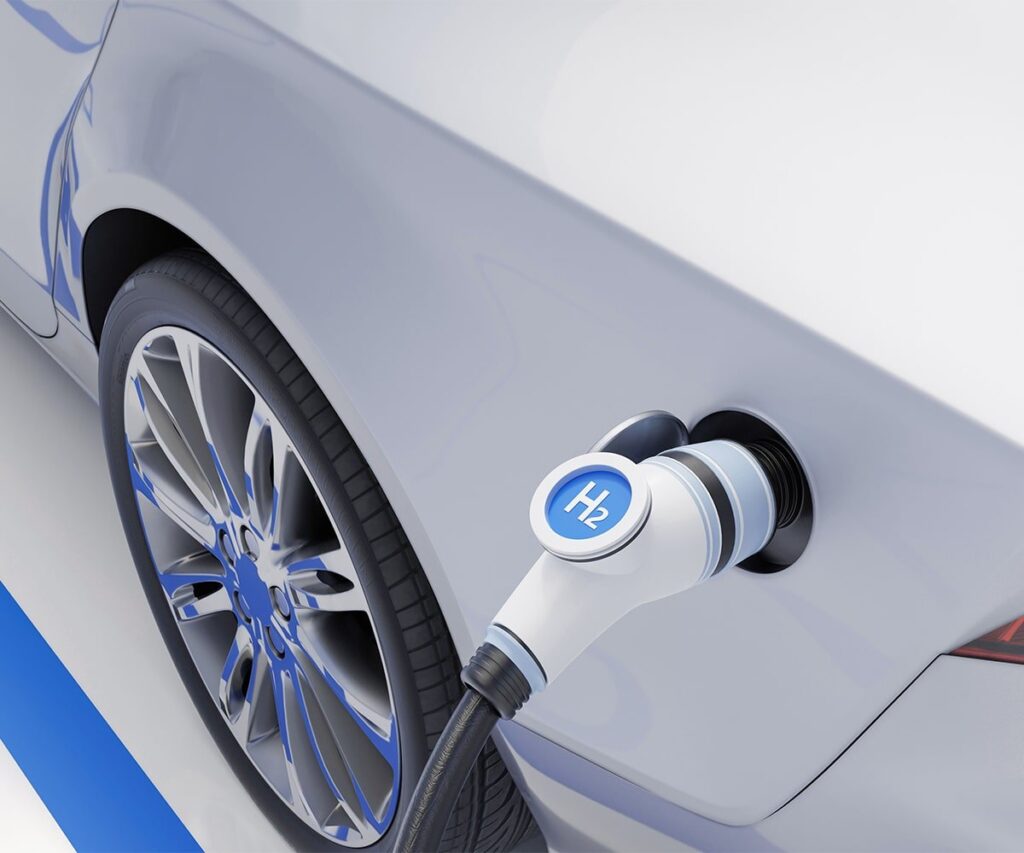
Project Details
Project Name :
أنواع مختلفة من مركبات الهيدروجين
Category :
مركبات
Green Energy
There are primarily two types of hydrogen vehicles: hydrogen fuel cell vehicles (FCVs) and hydrogen internal combustion engine vehicles (HICEVs). Here's a brief overview of each type:Hydrogen Fuel Cell Vehicles (FCVs):Fuel Cell Stack: FCVs use fuel cells to generate electricity from hydrogen and oxygen. This electricity powers an electric motor that drives the vehicle. The only byproduct of this process is water vapor.Efficiency: FCVs are highly efficient and produce zero emissions at the point of use.Range: FCVs typically have a longer driving range compared to battery electric vehicles (BEVs) and can be refueled in a matter of minutes, similar to gasoline vehicles.Examples: Toyota Mirai, Honda Clarity Fuel Cell, Hyundai NEXO.Hydrogen Internal Combustion Engine Vehicles (HICEVs):Combustion Engine: HICEVs use hydrogen as a fuel for internal combustion engines, similar to gasoline or diesel engines.Emissions: While HICEVs produce fewer emissions compared to conventional gasoline or diesel vehicles, they may still produce some nitrogen oxides (NOx) and trace amounts of other pollutants.Range: HICEVs typically have a shorter driving range compared to FCVs.Examples: BMW Hydrogen 7 (prototype), Mazda RX-8 Hydrogen RE (prototype).It's important to note that hydrogen fuel cell vehicles (FCVs) are more common and have garnered more attention in recent years due to their higher efficiency, zero-emission operation, and advancements in fuel cell technology. Additionally, FCVs are seen as more promising for mass adoption and are being actively pursued by several automakers and governments as part of efforts to decarbonize transportation and reduce air pollution.



THERMAL PROCESSES
At vero eos et accusamus et iusto odio dignissimos ducimus qui blanditiis praesentium voluptatum deleniti atque corrupti quos dolores et quas molestias excepturi sint occaecati cupiditate non provident.
Safety
Experienced project engineers with a focus on safety and speed of execution.
Reliability
Experienced project engineers with a focus on safety and speed of execution.
Experienced
Experienced project engineers with a focus on safety and speed of execution.
OUR BENEFITS
The benefits of different types of hydrogen vehicles vary based on their design and technology. Here's a breakdown of the benefits associated with hydrogen fuel cell vehicles (FCVs) and hydrogen internal combustion engine vehicles (HICEVs):Hydrogen Fuel Cell Vehicles (FCVs):Zero Emissions: FCVs produce only water vapor as a byproduct, making them a clean and environmentally friendly transportation option. This helps reduce air pollution and mitigate climate change.High Efficiency: Fuel cell technology is highly efficient, converting hydrogen into electricity with minimal waste heat. This results in better overall energy efficiency compared to internal combustion engines.Long Range: FCVs typically have a longer driving range compared to battery electric vehicles (BEVs) and can be refueled quickly, offering greater convenience for long-distance travel.Fast Refueling: Refueling a FCV with hydrogen takes only a few minutes, similar to refueling a gasoline vehicle. This quick refueling time eliminates range anxiety and makes FCVs more practical for daily use.Quiet Operation: FCVs operate quietly, contributing to reduced noise pollution in urban environments compared to vehicles with internal combustion engines.Hydrogen Internal Combustion Engine Vehicles (HICEVs):Improved Efficiency: HICEVs can achieve higher efficiency compared to traditional gasoline or diesel vehicles, especially when optimized for hydrogen combustion.Reduced Emissions: While not emission-free like FCVs, HICEVs produce lower emissions compared to conventional gasoline or diesel vehicles. This can help improve air quality, particularly in urban areas.Compatibility with Existing Infrastructure: HICEVs can be refueled using existing gasoline or diesel refueling infrastructure with minimal modifications, making them easier to integrate into the existing transportation network.Familiar Technology: Internal combustion engines are well-understood and widely used in the automotive industry, which can facilitate the development and adoption of HICEVs.Flexibility: HICEVs can potentially run on a blend of hydrogen and other fuels, such as gasoline or natural gas, providing flexibility in fuel options and transition strategies.Overall, both FCVs and HICEVs offer unique benefits that contribute to the broader goal of decarbonizing transportation and reducing the environmental impact of the automotive sector. However, FCVs are generally seen as more promising in the long term due to their higher efficiency, zero-emission operation, and potential for greater scalability and adoption.
